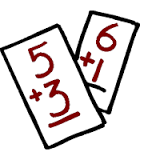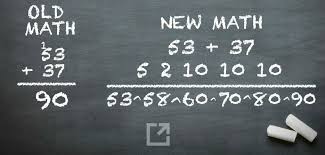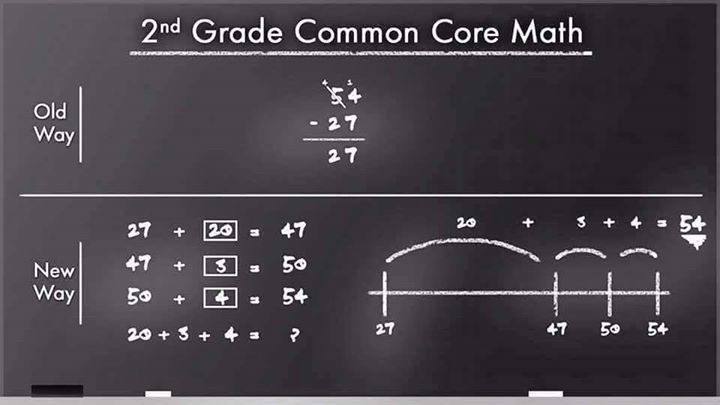Mental Calculation - Showcasing the Awesome Power of the Human Mind
October 1, 2017
Mental Calculation…In the Beginning
 Mental calculation is defined as arithmetical calculations solved using only the human brain. Mental calculation, in fact, is one of the earliest forms of problem solving. In the “good old days,” mental calculation began with memorization. Those of a certain age vividly remember flash cards as the memorization weapon of choice, skillfully wielded by elementary school teachers everywhere. Over and over, students called out answers at an ever-increasing rate of speed until every answer was correct every time. Little by little, the repetitive nature of flash cards helped build a strong foundation for the more advanced calculations of higher math.
Mental calculation is defined as arithmetical calculations solved using only the human brain. Mental calculation, in fact, is one of the earliest forms of problem solving. In the “good old days,” mental calculation began with memorization. Those of a certain age vividly remember flash cards as the memorization weapon of choice, skillfully wielded by elementary school teachers everywhere. Over and over, students called out answers at an ever-increasing rate of speed until every answer was correct every time. Little by little, the repetitive nature of flash cards helped build a strong foundation for the more advanced calculations of higher math.
As student proficiency in mental calculation increased, contests, complete with achievement certificates, medals, and trophies, were created to showcase the mental agility of the new young math superstars.
Mental Calculation and the New Math
 All was well with mental calculation through memorization until 1957. In that year, the Russians jumped ahead of the US in the space race by launching a rocket named Sputnik. One year later, President Eisenhower signed the National Defense Education Act and government money poured into the American Educational System to enhance the study of math and science. With the arrival of the 1960s a plan for this enhancement was implemented and “New Math” was born.
All was well with mental calculation through memorization until 1957. In that year, the Russians jumped ahead of the US in the space race by launching a rocket named Sputnik. One year later, President Eisenhower signed the National Defense Education Act and government money poured into the American Educational System to enhance the study of math and science. With the arrival of the 1960s a plan for this enhancement was implemented and “New Math” was born.
In place of the simple, straight-forward memorization approach to problem solving, New Math emphasized conceptual understanding. Students were encouraged to see numbers as sets of objects rather than random symbols.
Example: 53 + 37 = ?
For fifty years, New Math was the standard for America’s students. Then in 2010, an even more complex approach to problem solving, Common Core, was introduced. The stated goal of Common Core was to enable students to think more like mathematicians.
Incorporating many of the concepts of New Math, Common Core went a step further by debunking the established technique of simplifying answers. Believing that this process didn’t add much to the understanding of mathematics, the Common Core developers removed it. Fractional calculation by cross-multiplying was also eliminated. Instead of solving equations, students were now expected to analyze functions.
Example: 54 – 27 = ?

In theory, some Common Core functions are a part of everyday life.
Example: If an item is purchased for $2.67 and a ten-dollar bill is used to pay for it, how much change is due. Mental calculation can easily determine the answer.
$2.67 + .33 = $3.00.
$3.00 + $7.00 = $10.00
.33
+ $7.00
Therefore: $7.33 is due in change
In the classroom setting, however, Common Core was very poorly implemented. Instead of a careful explanation of the concepts, and proper teacher/student education, Common Core was thrust upon the US educational system “cold turkey.” As a result, math became so confusing that students, parents, and even teachers had difficulty understanding it. Instead of thinking like mathematicians, many students simply shut down. Mental calculation took a serious hit.
A Few Tricks to Put the Fun Back in Mental Calculation.
Calculation confusion now reigned supreme, but mental calculation was not out of the game just yet. There were still a few tricks up its mathematical sleeve.
The benefits of mental calculation are 3-fold.
- It saves time and is always available, particularly handy in situations where technical aids, like a calculator, are not allowed.
- It keeps the brain sharp through mental exercise.
- It adds a bit of mystery and magic to problem solving.
Here are a few mental calculation tricks to make you a mathematical star:
1. Multiply 2-digit numbers by 11. Try 53 x 11 = ?
1st: look at the number being multiplied (53)
2nd: add the two digits together (5 + 3 = 8)
3rd: insert the answer from step 2 between the digits of the original (5 8 3)
The answer: 53 x 11 = 583 Ta Dah!
But wait. What if the number in step 2 is a double-digit number?
Let’s give that a try… instead of 53, use 58. (58 x 11 = ?)
1st: add the two digits (5 + 8 = 13)
Now, instead of a single first digit, there are two – the 5 from 58 and the 1 from 13.
2nd: add both first digits together (5 + 1 = 6).
The first digit of the answer is 6
3rd: insert the second digit from step 1 (3) next to the digit from step 2. (6 3)
4th: close with the second digit of the original number (8). (6 3 8)
The Answer: 58 x 11 = 638 Pretty slick, eh!
- 2. Multiply 3-digit numbers by 11. Try 354 x 11 = ?
Multiplying 3-digit numbers is similar to multiplying 2-digit numbers with one small twist. The original number (354) will be split apart. The middle number of the original (5) will be eliminated and instead of one number inserted into the middle, there will be two.
1st: add digit one to digit two. (3 + 5 = 8)
2nd: add digit three to digit two. (4 + 5 = 9)
3rd: insert the answer from step 1 beside the first number of the original. (3 8)
4th: insert the answer from step 2 next. (3 8 9)
5th: finally, close with the third digit of the original number (3 8 9 4)
The Answer: 354 x 11 = 3894 Genius!!
- 3. Squaring a number. Select a number that ends in 5…let’s use 352 = ?
When squaring a number that ends in 5, the answer will always end with 25.
1st: multiply the first digit (3) by the next highest digit (4). 4 x 3 = 12
2nd: insert 25 at the end (12 25)
The Answer: 352 = 1225 Woo Hoo – you’re flying now!
There you have it. Mental calculation can really be fun. If, however, your brain is exhausted from all this mental exercise, there are R & R remedies available. A good calculator can carry you through until you’re ready to play “Mental Calculation” again.
Maybe you have an old calculator that just doesn’t do the job anymore and you’d like to upgrade. Whether the calculator you need is basic, scientific, or financial, it doesn’t take a mental wizard to know that there will be some cost involved. Why not let SellYourCalculators.com help defray that cost?
Our buy-back program for used calculators offers competitive prices, quick turn-around time, and outstanding customer service to get you back in the game ASAP. Contact us today for more information.
43532 Views | 0 Comments | Category - news





